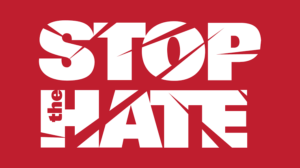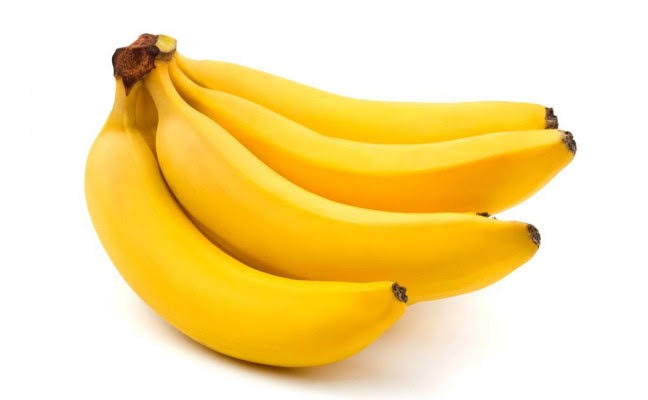
How to cure Restless Leg-Syndrome naturally
Restless Leg Syndrome (RLS)
It’s our legs and foot which have carried us so far in the journey of our whole life. Leg and foot are classified into the Karm-indriya category (motor organs of utmost importance) by Ayurveda. RLS is a nervous disorder, caused due to imbalance in the nervous system which causes an urge to move the legs. It is characterised by an irresistible urge to move one’s body to stop uncomfortable or odd sensations. RLS usually interferes with sleep and sleep patterns. Insomnia or sleep disturbances are common symptoms of RLS. Therefore it is also considered as a sleep disorder. RLS commonly affects the legs. It can also affect the arms, torso, head and even phantom limbs.

According to Ayurveda, there are three types of energy in human bodies, namely Vatta, Pitta and Kapha, which maintain normal body functions. Any functional deficit inside the body is recognised through the imbalance of Vata, Pitta and Kapha using the terms Vata dosha, Pitta dosha, and Kapha dosha, respectively. As a representative of Wind (vayu) and Ether (akash), Vata is responsible for all types of body movements in the mind and body. Since movement is the main function of Vata, (Vata qualities such as “light, dry, mobile, cold, hard, rough, sharp, subtle, flowing, and clear”, chala (flowing) is the main quality of Vata dosha)
Causes of RLS:
- Excessive consumption of dry foods, junk food and carbonated drinks etc
- Much use of stimulants such as caffeine, nicotine and alcohol etc
- High consumption of bitter foods
- Excessive exercises eq. spending too much time working out in the gym
- Excessive indulgence in sexual activities
- Drastic fasting eq. following a very strict diet to lose weight quickly
- Stress and excessive thinking.
- Late night sleeping habits
- Constipation
Symptoms: Restless leg syndrome is a condition that has been characterised as Vata dosha or an imbalance in the function of the Vata energy. If a Vata-constitution person has a Vata-increasing diet, activities and is deprived of rest, they are prone to have restless leg syndrome, which is a a Vata disorder. When Kapha- and Pitta-constitution people have Vata-provoking diets coupled with excessive physical and mental activities and lack of rest, they are prone to develop chronic diseases, which can manifest as a restless leg syndrome due to the combination of doshas.
The pathological condition includes Vata disturbance in the majjavaha srotas, which explains the role of the psyche in developing restless leg syndrome, as majja offers stability to the body and mind. Since our legs are used repeatedly throughout the day, they definitely undergo a lot of stress and strain at the end of the day. That is why we feel better when someone squeezes our legs at the end of the day, while we sleep. Due to excess mobility, people under the influence of Vata dosha are always restless. They will be shaking their legs, hands, eyes, eyebrows, lips, tongue, head, neck or any joint due to the hyperactive Vata energy.
Treatment: Ayurveda offers natural dietary and lifestyle advice to help balance Vata and calm the body, mind, arms and legs. Ayurveda has the best therapies and herbal medicines to balance the body constitutions, Specially Panchkarma therapies which are very helpful in RLS are: Abhyanga (Oil massage), Kaya Seka (Pizichil), Pinda Sweda and Earvang Dhara, Nasya, Shirodhara /Shirobasti, Basti (Medicated enema). Beside these therapies follow the instructions below:
- Stay regular with your daily routine. Elimination of bowel is a prerequisite for good health. Irregular elimination can allow toxins to build up, causing you to feel “plugged up” physically and mentally. Regularity of bowel movements is important to pacify the natural downward flow of Apana Vata and reduce ama, which can accumulate and cause blockages in your body. Try adding more fiber to your diet with fresh fruits and vegetables, quinoa or amaranth. Drink warm water just after wakeup before tooth-brush.
- Legs need rest, relaxing oil massage and good attention if we need to stay healthy and fit enough to carry on the day-to-day activities.
- Reduce stress as much as possible and Avoid smoking.
- Must do Morning walk, jogging or an evening post-dinner brisk walk at a moderate pace can help.
- If you are an exercise freak and want to work hard on your exercise, make sure to hydrate enough and de-stress yourself after exercise.
- Reduce Caffeine consumption- Caffeine is found in coffee, tea, chocolate, energy drinks, sodas and sports supplements and some over-the counter medications. Cut these off from your diet as far as possible.
- Drink Fresh fruit juices everyday and green vegetables are the best.
- Hydrate- Drink water liberally. Avoid diuretics in the form of caffeine, avoid alcohol.
- Increase electrolytes – depletion of minerals like calcium, sodium, magnesium, potassium etc crucial for muscle function and relaxation will lead to cramping of muscles and relax muscles. Try to compensate them. Replace natural electrolytes and minerals such by using trace liquid minerals, Himalayan sea salts, organic fruits and vegetables. Magnesium -Use a topical magnesium lotion or do magnesium salts soak. Magnesium can be absorbed through skin. It helps to displace calcium ions that are causing muscle cramping and restlessness in the legs.
- Stretch – tight muscles and fascia (connective tissue surrounding group of muscles) cause cramping and pain in the legs. Practice light morning stretch routine, get into Yoga sessions to stretch the muscles and before bed at night stretch your feet and calves by putting your feet against the wall and leaning them with your ankles bent so that your toes are pointing up.
- Try deep tissue massage (that targets the lower body, hips and legs), foam roller etc will work
- Healthy diet – Eat a balanced healthy diet of fruits, vegetables and lean proteins. Limit alcohol and caffeine especially at bedtime. Avoid any foods that you know that might keep you awake at night.
- Create a regular sleep schedule –Sleeplessness also can trigger symptoms. Quality and quantity of sleep is a must to get rid of pain.
- Sleep in a soapy bed – Many people report that putting a bar of soap under their bottom sheet chases away RLS and night time leg cramps. There is no scientific evidence in its proof.
- Supplements – vitamin D supplements been associated with low levels of iron or vitamins C and E. Each day, take 500mg of magnesium, 800-1000 mg of calcium and 800-1000 mg potassium. Shortage of any of these can make your legs twitchy. Drink mineral water rich in magnesium. Bump up your intake of folic acid, a B vitamin (called folate).
- Folic acid helps build red blood cells, which in turn helps oxygenate the body. That is an important benefit since RLS is associated with a decrease in oxygen. Food sources of folic acid include leafy green vegetables, orange juice and beans. You’ll also find folate in most multi-vitamins. Eat iron-rich foods such as dark green vegetables, liver, wheat germ, kidney beans, lean beef etc.
- Sex – Sex can be tried to get relieved.
- Breathe deeply – Release the tension by taking slow, deep breaths (anulom-vilom). It also helps to dim the lights and listen to soothing music before you go to bed. Turn off the TV before going to bed.
- Stretching – This helps to ease tight muscles and helps increase flexibility. massage little with warm oil then start it. Stretching should be done at night, before bedtime. This relaxes the body and mind. You can try doing the following stretches: Toe-pull Calf stretch– Sit on the floor with your legs extended out in front of you. Reach forward with both hands and grasp your toes, pulling gently until you feel the stretch in your calves. Hold for 10 to 15 seconds and relax. Repeat several times.
- Yogasanas: It is much more beyond exercise. It is a holistic approach towards effective body-mind healing, Calms the brain and helps relieve mild depression, Stretches the spine, shoulders, hamstrings, and groins, Stimulates the liver and kidneys which’ll help to remove toxins, Improves digestion, Relieves anxiety, fatigue, headache etc.
- Paschimottanasana
- Uttanasana
- Paschimattanasana
- Janu Sirsasana
- Shavasana (Corpse pose)
- Pranayama (Deep Breathing)
To book an appointment or to know more about your body or Ayurvedic treatment for Restless leg syndrome in Melbourne with one of our highly experienced Ayurveda specialist please contact on +61411114403 or email at info@rejoiceclinic.com.au

















